Introduction
Because the kitchen is used so frequently for meal prep and storage, it’s no wonder that your kitchen sink faucet may experience some wear and tear after years of use. Some common problems are mineral buildup, rusting, or leaks.
Although you can stave off having to replace your faucet by replacing worn-out parts, like the filter or O-ring, it’s best to get a new one. An important thing to remember is that you don’t have to wait until your current faucet breaks down before getting rid of it. You might want a change in look for your kitchen or come across a model that is better than what you’re using now.
There are many factors to consider before purchasing a new kitchen faucet. Below, we will walk you through the different features and considerations affecting your final decision.
Before changing your kitchen faucet,
If you have a dripping or leaking kitchen faucet, it’s best to figure out what is causing the problem before deciding whether to repair or replace it. In most cases, leaks can be fixed by replacing the O-ring or washer in your faucet. This makes repairing a faucet cheaper than replacement.
However, if leaks keep occurring in your sink faucets, then it may be time for a new one instead of wasting money continuing to fix parts.
Just as often, the mineral buildup results from hard water in the household. Even though it might be aided by replacing the faucet, that does not address the root cause. If you want to stop mineral buildup on a new faucet, install a water softener before you replace your old one.
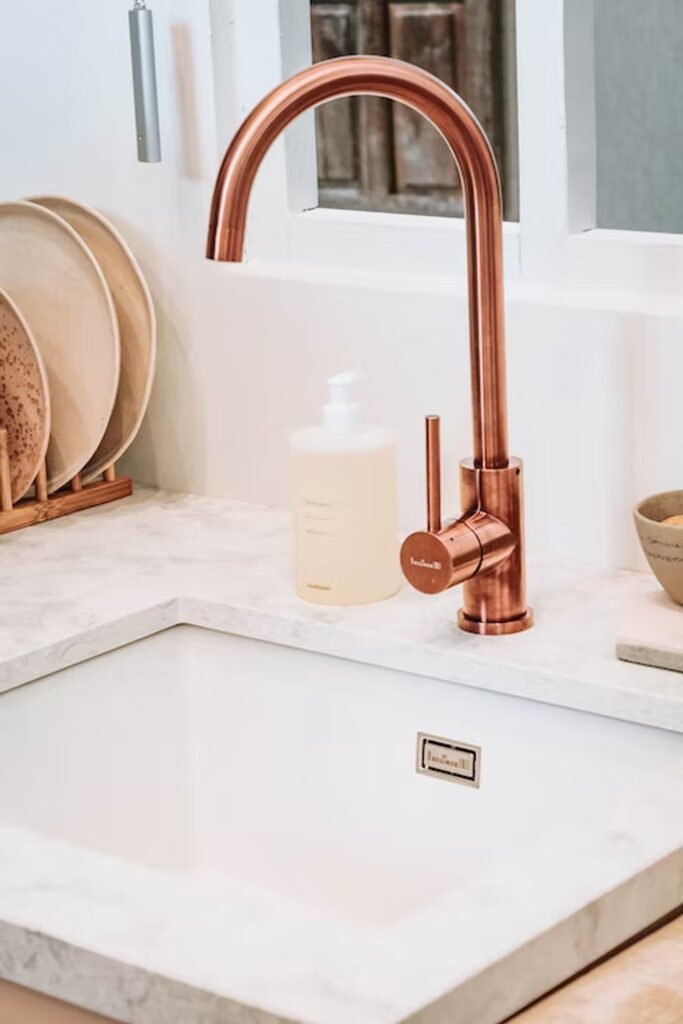
Tips when purchasing a kitchen faucet:
Because a properly maintained kitchen faucet can last 15 to 20 years, it’s essential to research the various faucet features and factors that may affect your decision, such as water flow rate, receiver configuration, and finish.
Flow rates (GPM)
When shopping for a new kitchen faucet, one of the key factors to consider is the flow rate of the fixture. The flow rate, typically measured in gallons per minute (GPM), determines the water’s speed from your faucet. So, a higher GPM means more water over time and vice versa.
You might think you want the highest GPM possible, but that’s only sometimes the case. A high GPM can be a disadvantage if your home has low water pressure. The water can come out too quickly, making filling pots and pans difficult. In addition, high-flow fixtures can use more water than necessary, increasing utility bills.
When choosing the best kitchen faucet, balancing flow rate and water pressure is essential. A good rule of thumb is to choose a fixture with a flow rate of 1.5 GPM or less. This will provide adequate flow for most tasks while still being efficient.
Sink Configuration
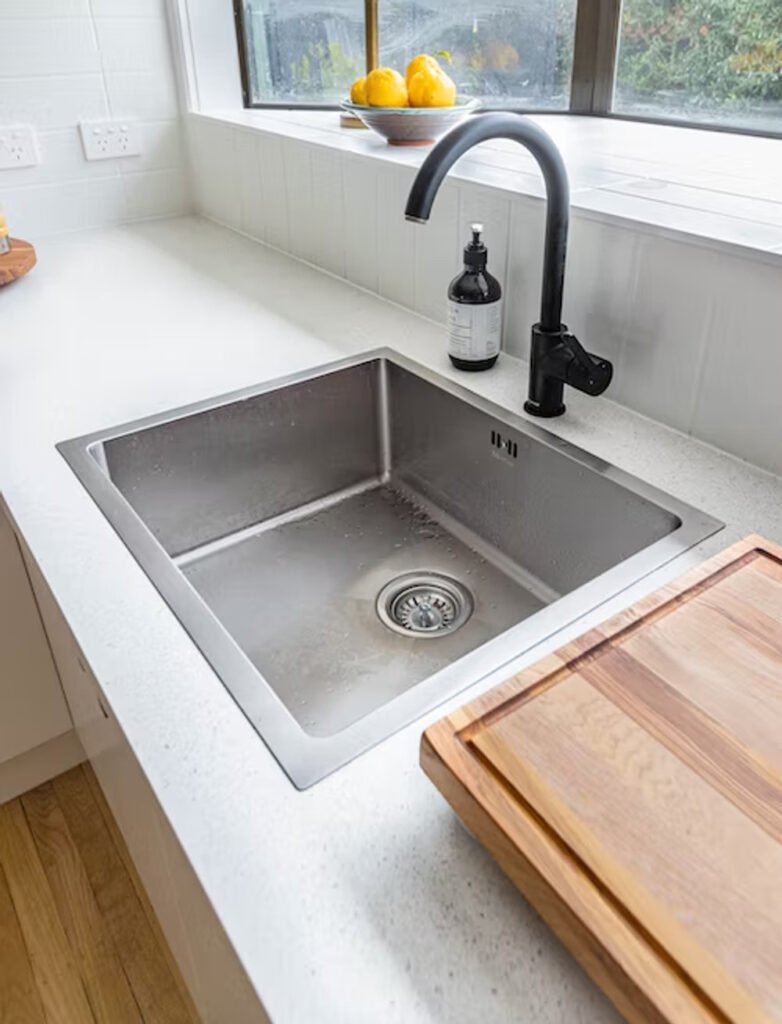
As any homeowner knows, the location of your faucets is just as important as the actual faucet fixtures themselves. Not only do you need to consider the practicalities of where your plumbing is located, but you also need to consider the aesthetic appeal of your taps. It is essential to take the time to find the ideal location for your new receiver if you want both a stylish and functional water supply in your home.
First, measure the distance between the water supply’s center and the drain’s center to determine how much space you have to work with. With these dimensions in mind, consider where would be the best placement for your new receiver.
A few elements must be considered when selecting a location for your receiver. First, you need to make sure that it is easily accessible. You want to avoid reaching over a sink full of dirty dishes to turn on the water. Second, you must ensure the receiver is close to other kitchen objects. You want it to be safe from being knocked over by a wayward pan or pot.
Once you have found the perfect spot for your new receiver, it is time to install it. Ensure you follow all manufacturer’s instructions carefully to avoid any damage to your new investment. With a little care and attention, your new receiver will provide years of trouble-free service.
Finish

There are many different kitchen faucet finishes to choose from when you’re looking to improve the aesthetic of your kitchen or find a new faucet that matches your current style. Some of the most popular finishes include:
- Chrome: A classic and timeless finish that works well with any style
- Brushed nickel: A warm and neutral finish that adds a touch of elegance
- Copper: A unique and eye-catching finish that can add character to any kitchen
- Stainless steel: A durable and low-maintenance finish that is perfect for busy families
No matter your personal style, there is sure to be a kitchen faucet finish that will suit your needs. By exploring your options, you can ensure that your new kitchen faucet will be the perfect addition to your home.
Different types of kitchen taps.
There are various kitchen types of faucets to choose from based on the number of handles as well as the size and shape of the spout. Common options include a single-handled, double-handled, touchless, fixed spout, pull-down spout, gooseneck spout, straight spout, and pot filler. Each has its benefits to consider.
- Single handled faucet
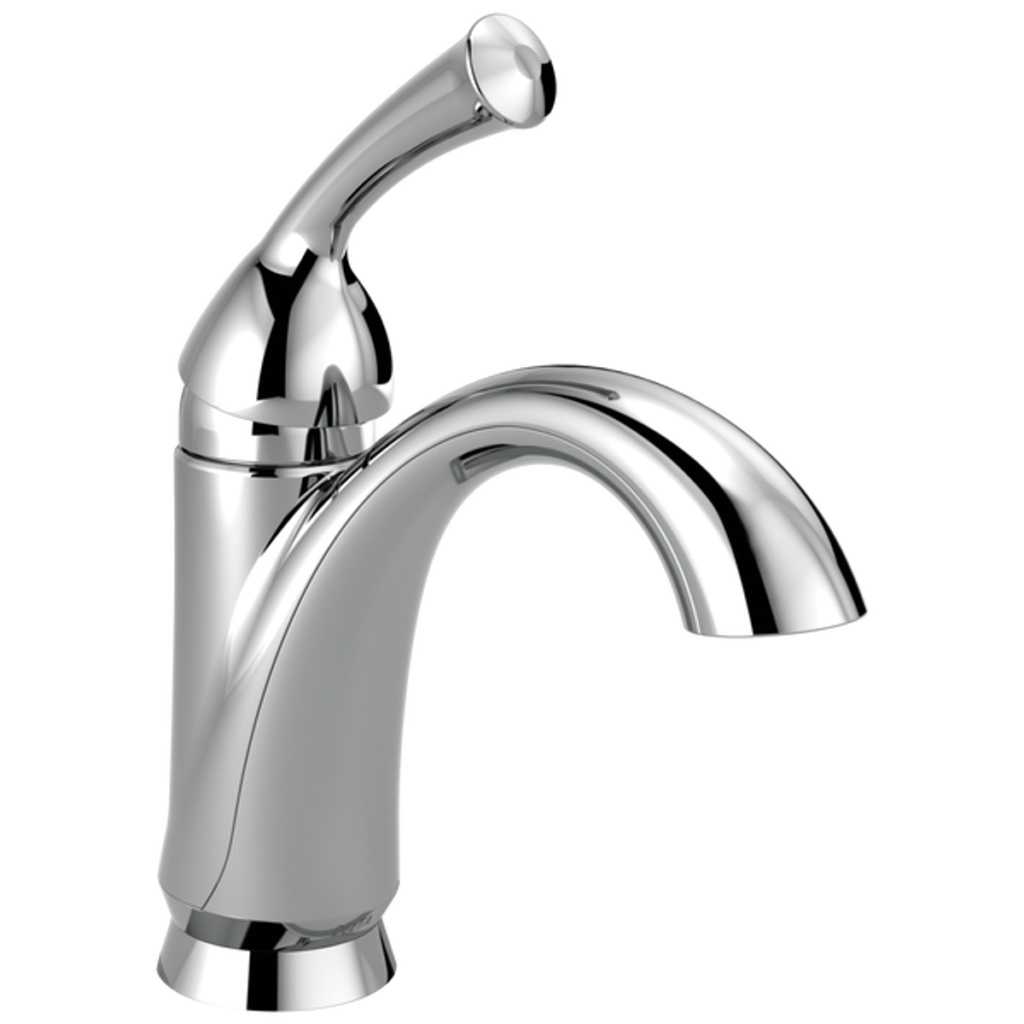
Single-handled faucets are easy to operate with one hand, which can be helpful when your hands are full or dirty. From a kitchen design standpoint, they can also help to create a more streamlined look in your kitchen.
- Double-handled faucets

Double-handled faucets are the way to go if you want more precise temperature control. They’re perfect for tasks that require greater precision, like making coffee or cooking pasta.
- Touchless faucets
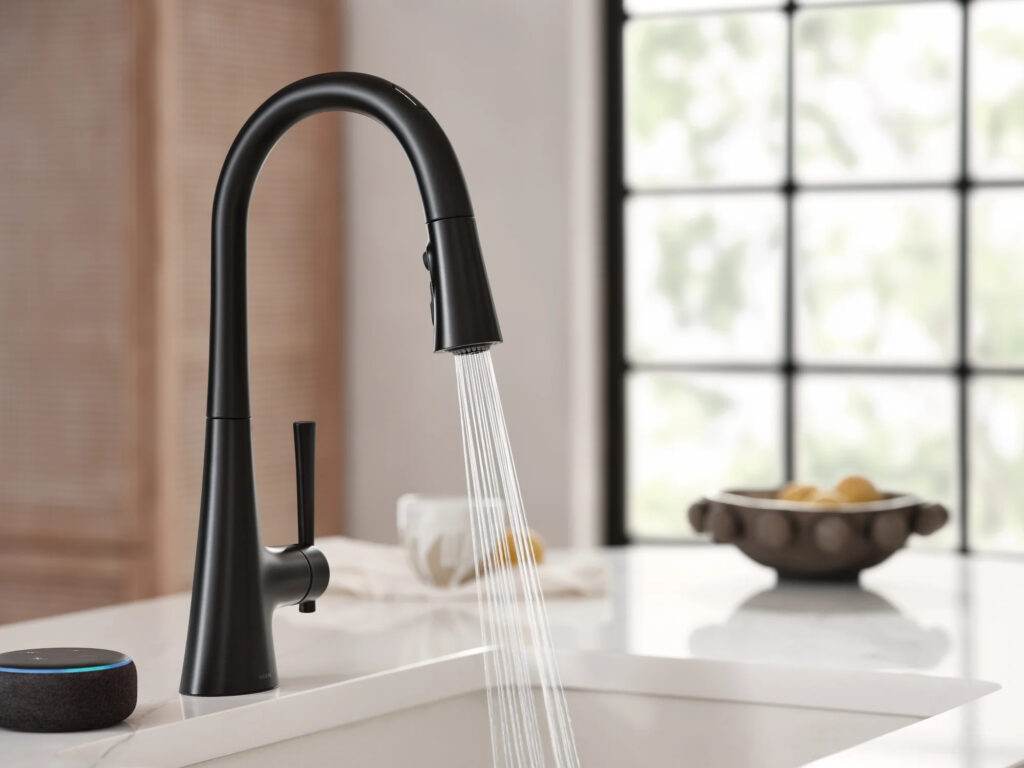
Touchless faucets are a fantastic hands-free option to decrease the spread of germs. A sensor frequently operates them, so you don’t need to worry about turning a handle off and on.
- Fixed spout faucets
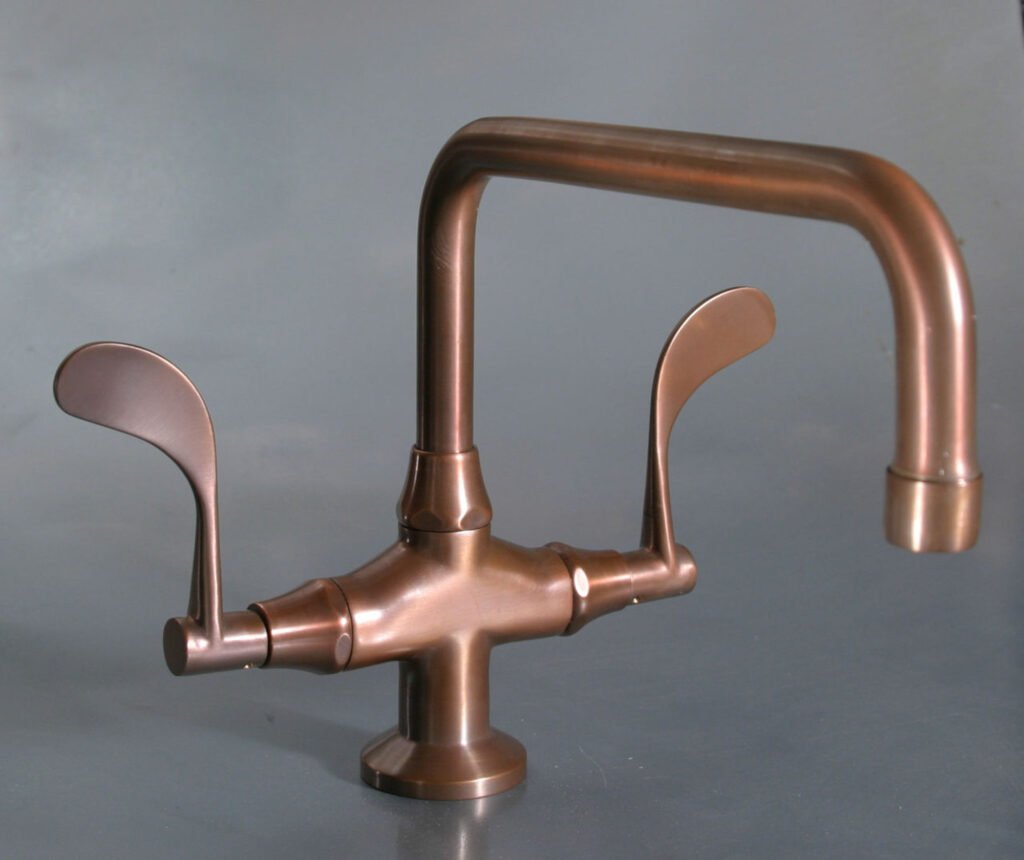
Keep your faucet in one place with a fixed spout. These spouts are attached directly to the countertop or sink and vary in handle design. An extended spout is important to some when choosing a kitchen faucet, as shorter ones might not be able to reach certain pots and pans.
- Pull down the kitchen faucet.

The flexible hose on pull-down spouts makes reaching all areas of your sink easy. Gooseneck spouts have a high arch that provides plenty of clearance for filling pots and cleaning larger items.
- Gooseneck spout faucets
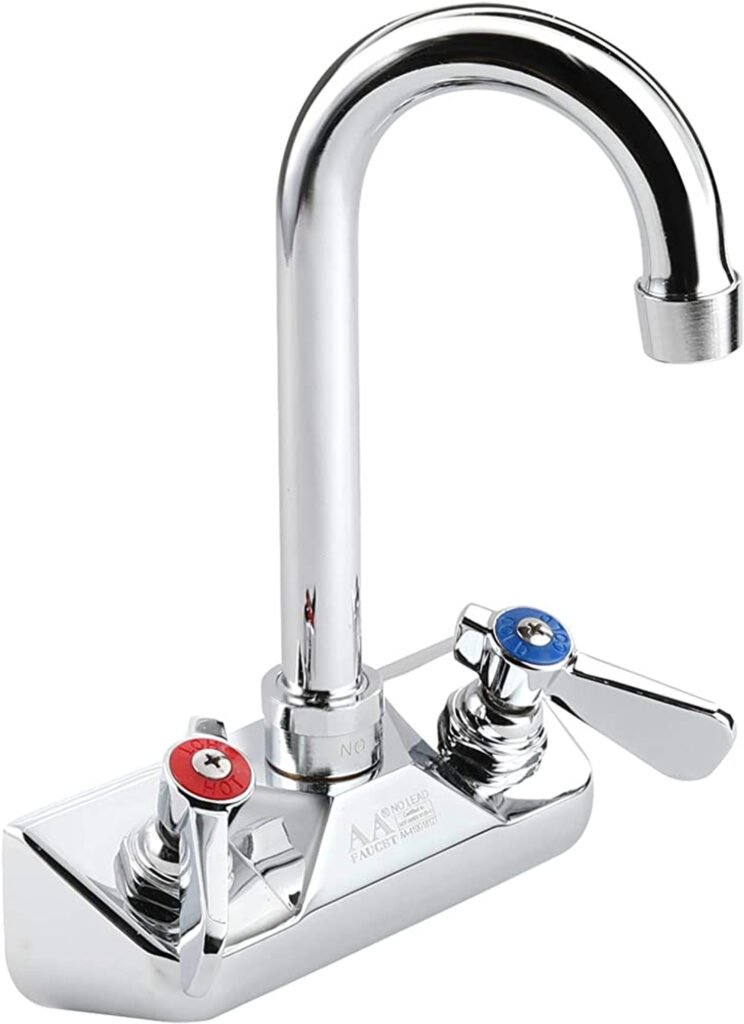
Gooseneck spouts have a high arch that provides plenty of clearance for filling pots and cleaning larger items. The downside to this handle design is that operating with limited counter space can be more challenging.
- Straight spout faucets
A straight spout has a simple, sleek design that works well in any kitchen. These faucets are easy to operate and provide ample clearance for most tasks. However, it’s important to remember that straight spouts can be more susceptible to dripping.
- Pot filler faucets
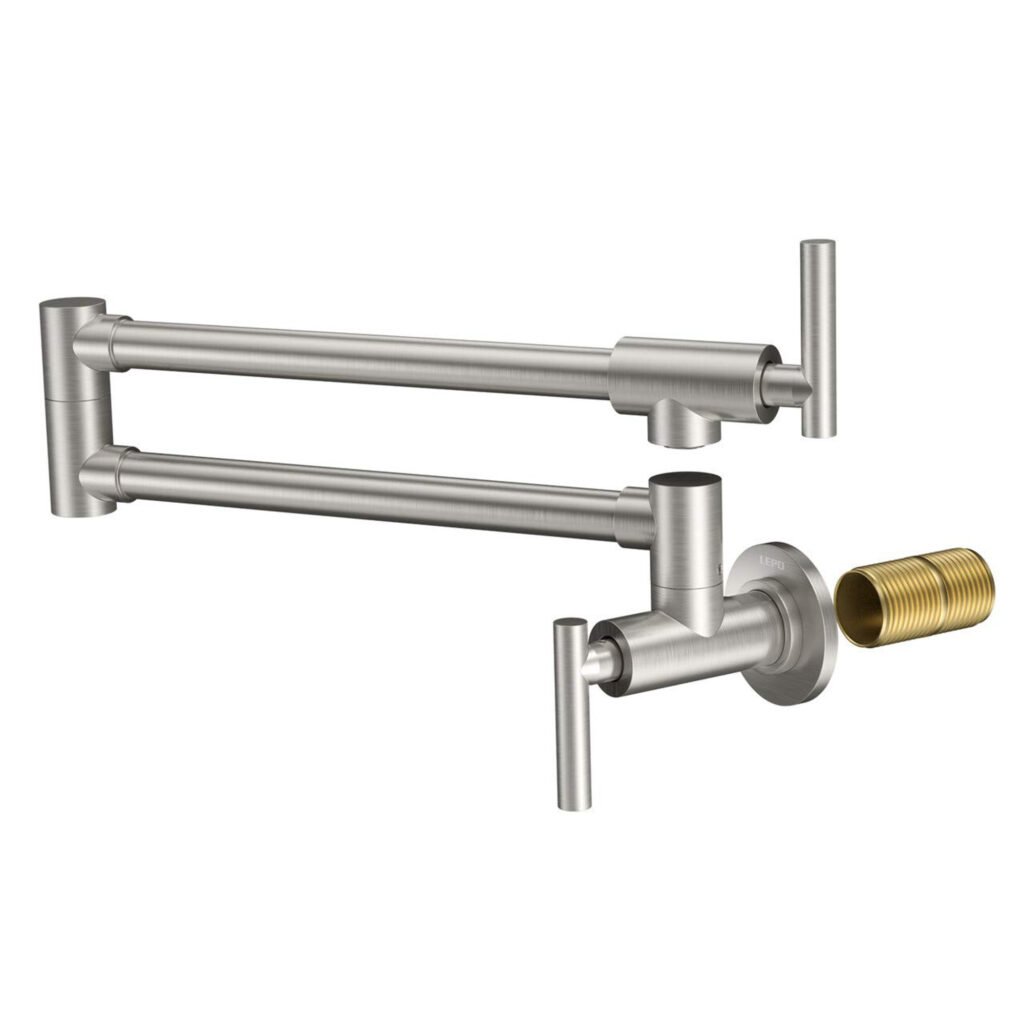
If you frequently find yourself filling large pots with water, a pot filler faucet can be a helpful addition to your kitchen. These faucets are installed above the stove, making filling pots easy without carrying them to the sink.
When choosing a kitchen faucet, there are many factors besides style. These include things like finish, materials, installation type, and price. With the many options available, finding the one that best suits your needs through research is crucial.
Cost
The total expense of installing a new kitchen faucet fluctuates primarily based on whether you carry out the installation or bring in a professional plumber. If you have the experience and proper tools to install the kitchen faucet, then your only cost is the price of the fixture itself.
Kitchen faucet cost is based on raw materials, shapes, and types.
Where to shop
When you need a new kitchen faucet, your local home improvement store is the first place to look. You can find more products online from credible retailers, so you’re not limited to what’s available in your locality. Weigh the pros and cons of shopping for a kitchen faucet in-store or online to decide which method is best for your needs.
- Buying In-Store
An excellent reason to buy your kitchen faucet from a store instead of online is that you can find professionals to help ensure you pick the best fixture for your home. You also get to see the product in person rather than just looking at pictures or videos on a website. Ensure you have everything you need before going to the store to avoid making multiple trips for your new kitchen faucet!
- Buying Online
Although you’ll find a more diverse range of kitchen faucets online than in stores, shopping has some drawbacks. For one, you rely on pictures and videos rather than being able to see the product in person. Second, there’s always the potential for damage during shipping.

Wrapping up
No matter where you buy your kitchen faucet, research to ensure you get a quality product that lasts for years. With so many different styles, materials, and finishes available, a kitchen faucet is bound to be perfect for your needs!
Do you have additional questions? If so, please reach out to Hofen Sanitary. With over 19 years of experience in manufacturing and exporting faucets, we have a wide range of products for your selection.

